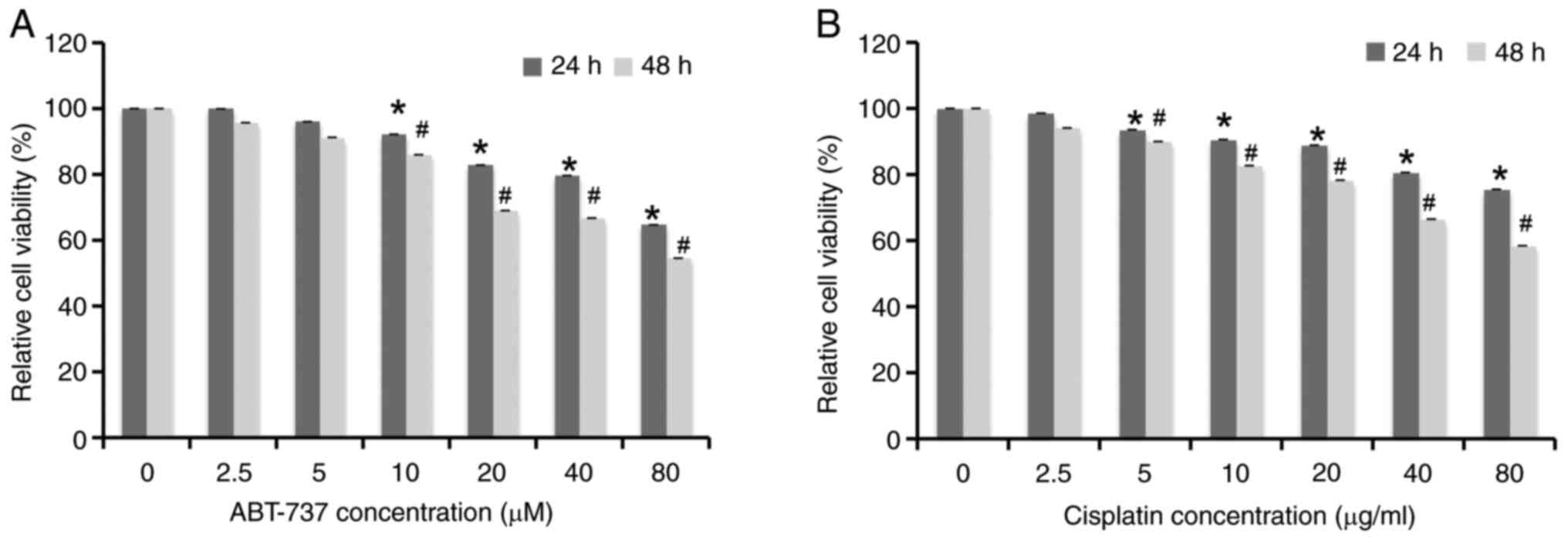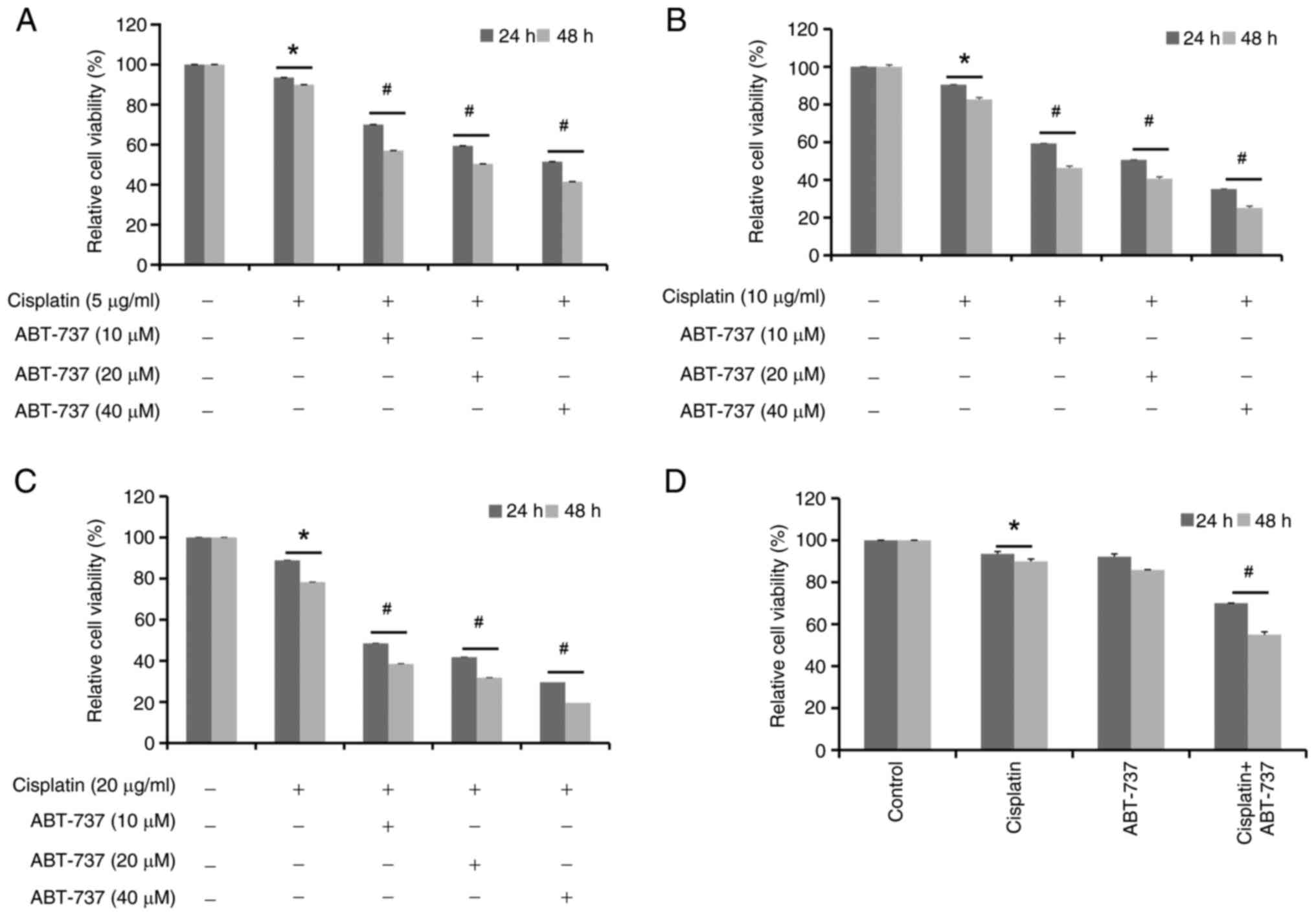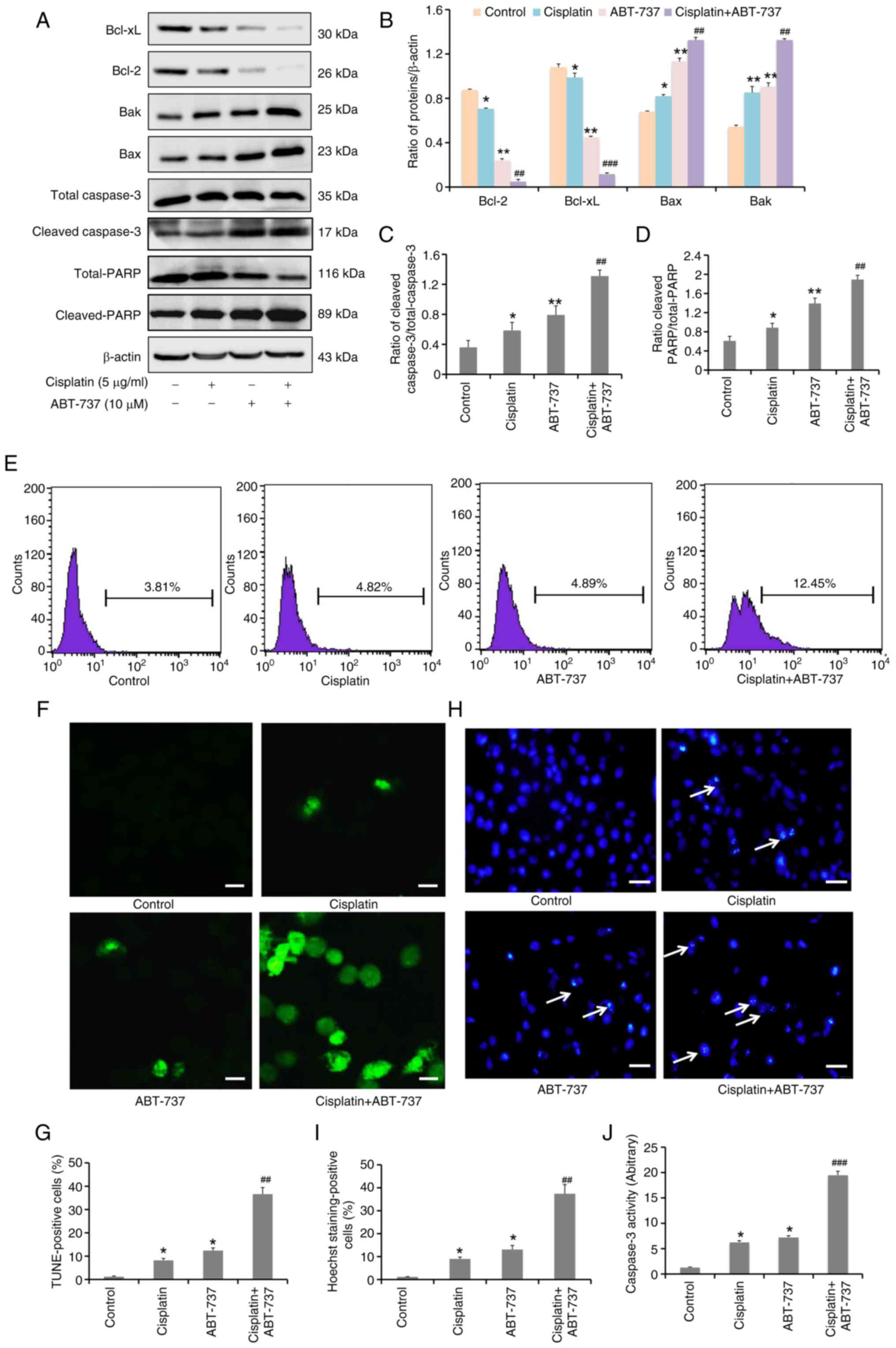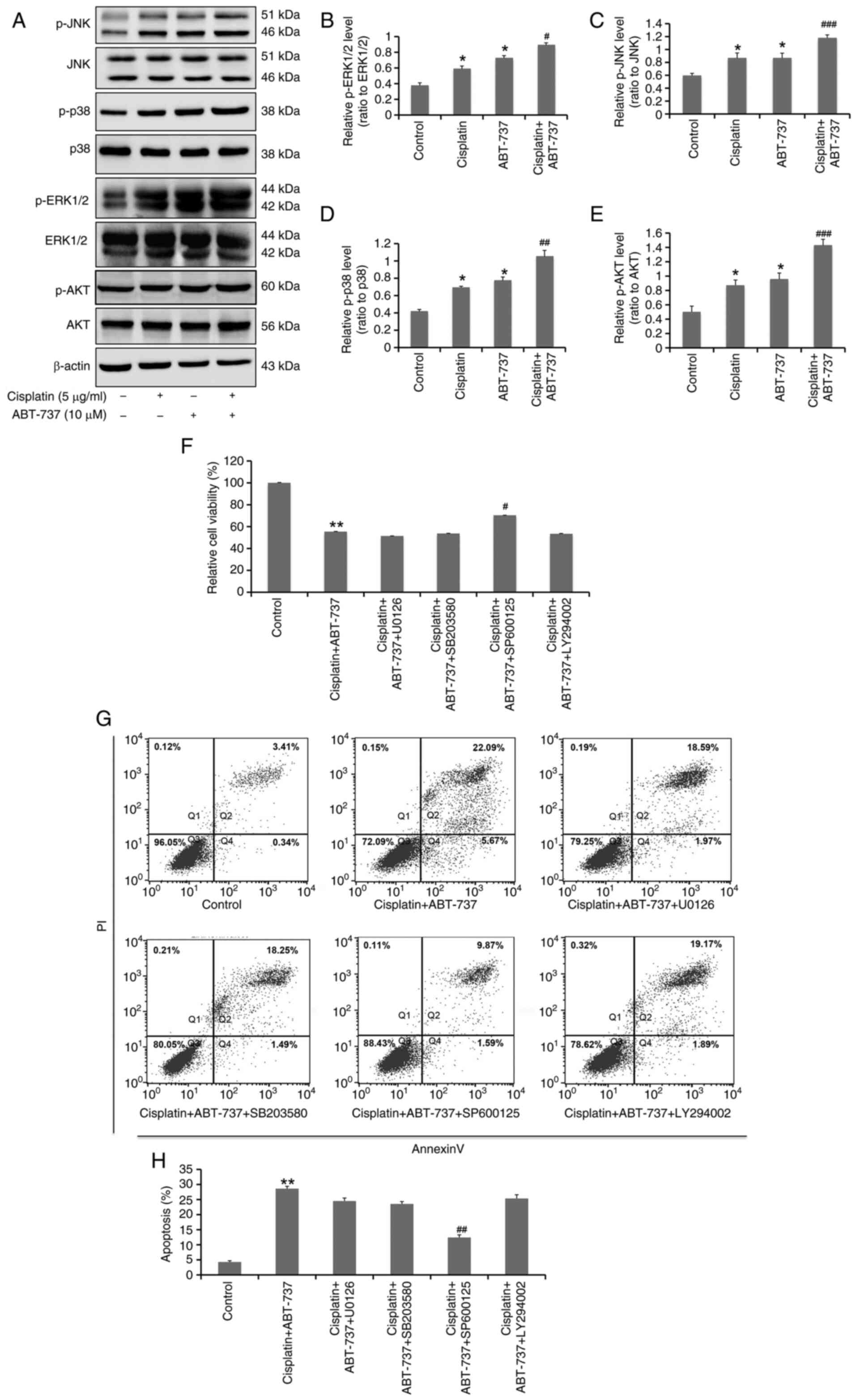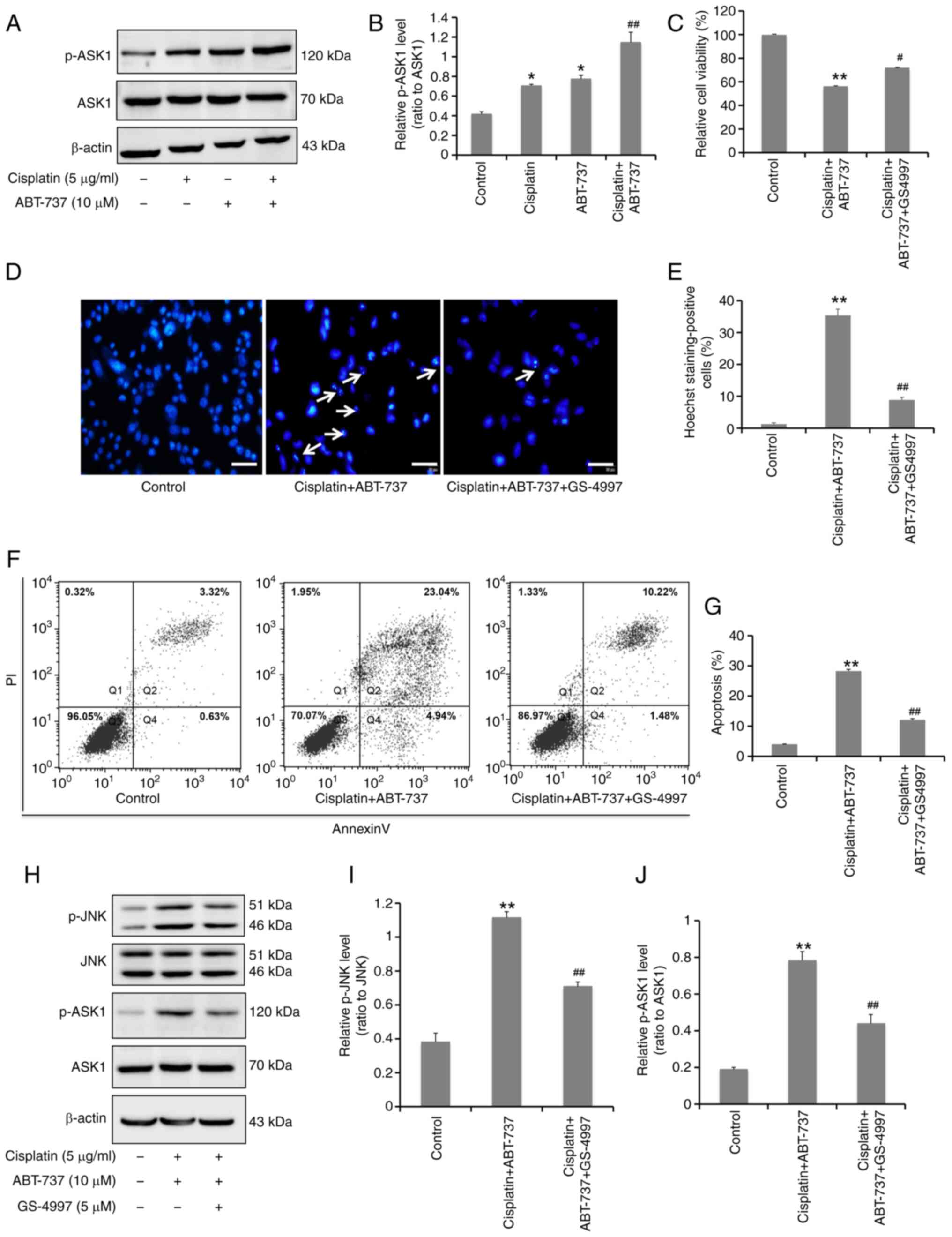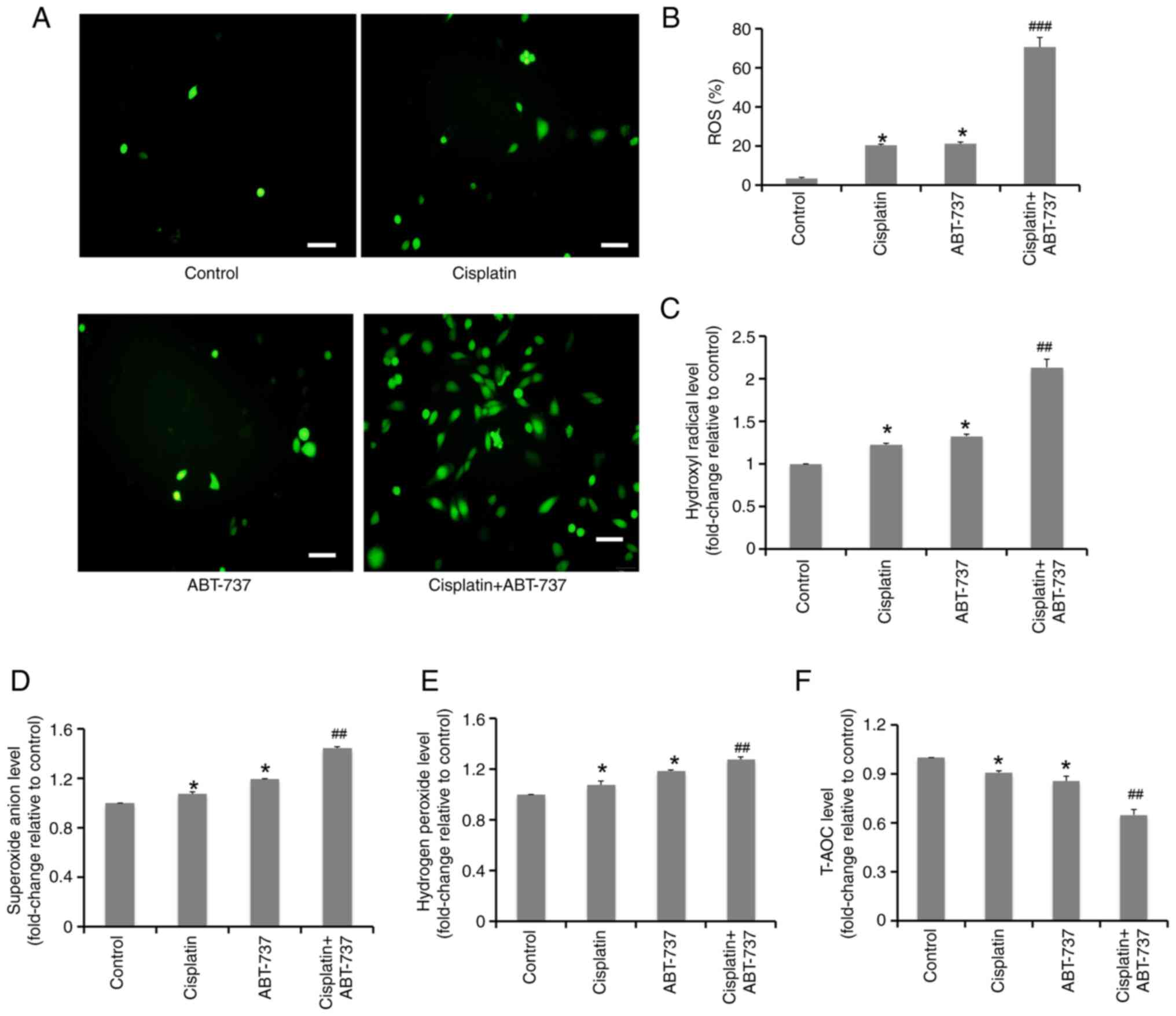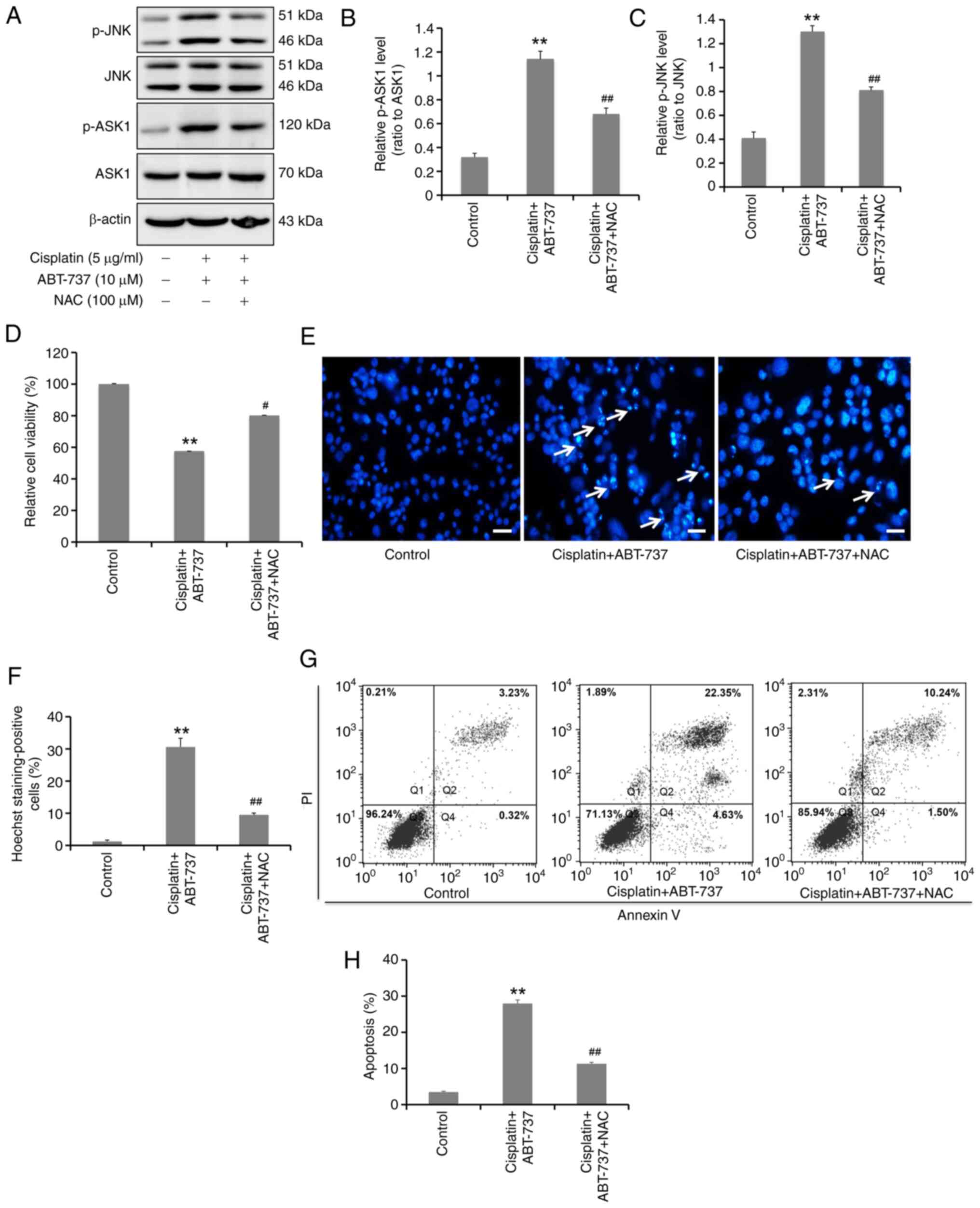|
1
|
Vergote I, González-Martín A, Ray-Coquard
I, Harter P, Colombo N, Pujol P, Lorusso D, Mirza MR, Brasiuniene
B, Madry R, et al: European experts consensus: BRCA/homologous
recombination deficiency testing in first-line ovarian cancer. Ann
Oncol. 33:276–287. 2022. View Article : Google Scholar : PubMed/NCBI
|
|
2
|
Zhao L, Guo H, Chen X, Zhang W, He Q, Ding
L and Yang B: Tackling drug resistance in ovarian cancer with
epigenetic targeted drugs. Eur J Pharmacol. 927:1750712022.
View Article : Google Scholar : PubMed/NCBI
|
|
3
|
Marchetti C, De Felice F, Romito A,
Iacobelli V, Sassu CM, Corrado G, Ricci C, Scambia G and Fagotti A:
Chemotherapy resistance in epithelial ovarian cancer: Mechanisms
and emerging treatments. Semin Cancer Biol. 77:144–166. 2021.
View Article : Google Scholar : PubMed/NCBI
|
|
4
|
Song M, Cui M and Liu K: Therapeutic
strategies to overcome cisplatin resistance in ovarian cancer. Eur
J Med Chem. 232:1142052022. View Article : Google Scholar : PubMed/NCBI
|
|
5
|
McGlorthan L, Paucarmayta A, Casablanca Y,
Maxwell GL and Syed V: Progesterone induces apoptosis by activation
of caspase-8 and calcitriol via activation of caspase-9 pathways in
ovarian and endometrial cancer cells in vitro. Apoptosis.
26:184–194. 2021. View Article : Google Scholar : PubMed/NCBI
|
|
6
|
Ni M, Zhou J, Zhu Z, Xu Q, Yin Z, Wang Y,
Zheng Z and Zhao H: Shikonin and cisplatin synergistically overcome
cisplatin resistance of ovarian cancer by inducing ferroptosis via
upregulation of HMOX1 to promote Fe2+ accumulation.
Phytomedicine. 112:1547012023. View Article : Google Scholar : PubMed/NCBI
|
|
7
|
Ferrara M, Pecorino B, D'Agate MG,
Angelico G, Capoluongo ED, Malapelle U, Pepe F, Scollo P and Mereu
L: Uterine tumours resembling ovarian sex-cord tumors: A case
report and review of the literature. J Clin Med. 12:71312023.
View Article : Google Scholar : PubMed/NCBI
|
|
8
|
Ortiz M, Wabel E, Mitchell K and Horibata
S: Mechanisms of chemotherapy resistance in ovarian cancer. Cancer
Drug Resist. 5:304–316. 2022.PubMed/NCBI
|
|
9
|
Stover EH, Baco MB, Cohen O, Li YY,
Christie EL, Bagul M, Goodale A, Lee Y, Pantel S, Rees MG, et al:
Pooled genomic screens identify anti-apoptotic genes as targetable
mediators of chemotherapy resistance in ovarian cancer. Mol Cancer
Res. 17:2281–2293. 2019. View Article : Google Scholar : PubMed/NCBI
|
|
10
|
Yuan J, Lan H, Jiang X, Zeng D and Xiao S:
Bcl-2 family: Novel insight into individualized therapy for ovarian
cancer (review). Int J Mol Med. 46:1255–1265. 2020.PubMed/NCBI
|
|
11
|
Williams J, Lucas PC, Griffith KA, Choi M,
Fogoros S, Hu YY and Liu JR: Expression of Bcl-xL in ovarian
carcinoma is associated with chemoresistance and recurrent disease.
Gynecol Oncol. 96:287–295. 2005. View Article : Google Scholar : PubMed/NCBI
|
|
12
|
Wong M, Tan N, Zha J, Peale FV, Yue P,
Fairbrother WJ and Belmont LD: Navitoclax (ABT-263) reduces
Bcl-x(L)-mediated chemoresistance in ovarian cancer models. Mol
Cancer Ther. 11:1026–1035. 2012. View Article : Google Scholar : PubMed/NCBI
|
|
13
|
Xu L, Xie Q, Qi L, Wang C, Xu N, Liu W, Yu
Y, Li S and Xu Y: Bcl-2 overexpression reduces cisplatin
cytotoxicity by decreasing ER-mitochondrial Ca2+ signaling in SKOV3
cells. Oncol Rep. 39:985–992. 2018.PubMed/NCBI
|
|
14
|
Maji S, Panda S, Samal SK, Shriwas O, Rath
R, Pellecchia M, Emdad L, Das SK, Fisher PB and Dash R: Bcl-2
antiapoptotic family proteins and chemoresistance in cancer. Adv
Cancer Res. 137:37–75. 2018. View Article : Google Scholar : PubMed/NCBI
|
|
15
|
Guo T, Gu C, Li B and Xu C: Dual
inhibition of FGFR4 and BCL-xL inhibits multi-resistant ovarian
cancer with BCL2L1 gain. Aging (Albany NY). 13:19750–19759. 2021.
View Article : Google Scholar : PubMed/NCBI
|
|
16
|
Whitecross KF, Alsop AE, Cluse LA,
Wiegmans A, Banks KM, Coomans C, Peart MJ, Newbold A, Lindemann RK
and Johnstone RW: Defining the target specificity of ABT-737 and
synergistic antitumor activities in combination with histone
deacetylase inhibitors. Blood. 113:1982–1991. 2009. View Article : Google Scholar : PubMed/NCBI
|
|
17
|
Fitzgerald DJ, Moskatel E, Ben-Josef G,
Traini R, Tendler T, Sharma A, Antignani A, Mussai F, Wayne A,
Kreitman RJ and Pastan I: Enhancing immunotoxin cell-killing
activity via combination therapy with ABT-737. Leuk Lymphoma. 52
(Suppl 2):S79–S81. 2011. View Article : Google Scholar
|
|
18
|
Fan Z, Yu H, Cui N, Kong X, Liu X, Chang
Y, Wu Y, Sun L and Wang G: ABT737 enhances cholangiocarcinoma
sensitivity to cisplatin through regulation of mitochondrial
dynamics. Exp Cell Res. 335:68–81. 2015. View Article : Google Scholar : PubMed/NCBI
|
|
19
|
Xie Q, Su J, Jiao B, Shen L, Ma L, Qu X,
Yu C, Jiang X, Xu Y and Su L: ABT737 reverses cisplatin resistance
by regulating ER-mitochondria Ca2+ signal transduction in human
ovarian cancer cells. Int J Oncol. 49:2507–2519. 2016. View Article : Google Scholar : PubMed/NCBI
|
|
20
|
Ni Z, Wang B, Dai X, Ding W, Yang T, Li X,
Lewin S, Xu L, Lian J and He F: HCC cells with high levels of Bcl-2
are resistant to ABT-737 via activation of the ROS-JNK-autophagy
pathway. Free Radic Biol Med. 70:194–203. 2014. View Article : Google Scholar : PubMed/NCBI
|
|
21
|
Moloney JN and Cotter TG: ROS signalling
in the biology of cancer. Semin Cell Dev Biol. 80:50–64. 2018.
View Article : Google Scholar : PubMed/NCBI
|
|
22
|
Huang M, Li X, Jia S, Liu S, Fu L, Jiang X
and Yang M: Bisphenol AF induces apoptosis via estrogen receptor
beta (ERβ) and ROS-ASK1-JNK MAPK pathway in human granulosa cell
line KGN. Environ Pollut. 270:1160512021. View Article : Google Scholar : PubMed/NCBI
|
|
23
|
Keuling AM, Andrew SE and Tron VA:
Inhibition of p38 MAPK enhances ABT-737-induced cell death in
melanoma cell lines: Novel regulation of PUMA. Pigment Cell
Melanoma Res. 23:430–440. 2010. View Article : Google Scholar : PubMed/NCBI
|
|
24
|
Will B, Siddiqi T, Jordà MA, Shimamura T,
Luptakova K, Staber PB, Costa DB, Steidl U, Tenen DG and Kobayashi
S: Apoptosis induced by JAK2 inhibition is mediated by Bim and
enhanced by the BH3 mimetic ABT-737 in JAK2 mutant human erythroid
cells. Blood. 115:2901–2909. 2010. View Article : Google Scholar : PubMed/NCBI
|
|
25
|
Dasmahapatra G, Lembersky D, Rahmani M,
Kramer L, Friedberg J, Fisher RI, Dent P and Grant S: Bcl-2
antagonists interact synergistically with bortezomib in DLBCL cells
in association with JNK activation and induction of ER stress.
Cancer Biol Ther. 8:808–819. 2009. View Article : Google Scholar : PubMed/NCBI
|
|
26
|
Konopleva M, Milella M, Ruvolo P, Watts
JC, Ricciardi MR, Korchin B, McQueen T, Bornmann W, Tsao T, Bergamo
P, et al: MEK inhibition enhances ABT-737-induced leukemia cell
apoptosis via prevention of ERK-activated MCL-1 induction and
modulation of MCL-1/BIM complex. Leukemia. 26:778–787. 2012.
View Article : Google Scholar : PubMed/NCBI
|
|
27
|
Yu H, Su J, Xu Y, Kang J, Li H, Zhang L,
Yi H, Xiang X, Liu F and Sun L: p62/SQSTM1 involved in cisplatin
resistance in human ovarian cancer cells by clearing ubiquitinated
proteins. Eur J Cancer. 47:1585–1594. 2011. View Article : Google Scholar : PubMed/NCBI
|
|
28
|
Zhang H, Kong X, Kang J, Su J, Li Y, Zhong
J and Sun L: Oxidative stress induces parallel autophagy and
mitochondria dysfunction in human glioma U251 cells. Toxicol Sci.
110:376–388. 2009. View Article : Google Scholar : PubMed/NCBI
|
|
29
|
Zhang C, Shi J, Mao SY, Xu YS, Zhang D,
Feng LY, Zhang B, Yan YY, Wang SC, Pan JP, et al: Role of p38 MAPK
in enhanced human cancer cells killing by the combination of
aspirin and ABT-737. J Cell Mol Med. 19:408–417. 2015. View Article : Google Scholar : PubMed/NCBI
|
|
30
|
Kim EK and Choi EJ: Compromised MAPK
signaling in human diseases: An update. Arch Toxicol. 89:867–882.
2015. View Article : Google Scholar : PubMed/NCBI
|
|
31
|
Dong D, Dong Y, Fu J, Lu S, Yuan C, Xia M
and Sun L: Bcl2 inhibitor ABT737 reverses the Warburg effect via
the Sirt3-HIF1α axis to promote oxidative stress-induced apoptosis
in ovarian cancer cells. Life Sci. 255:1178462020. View Article : Google Scholar : PubMed/NCBI
|
|
32
|
Morita K, Saitoh M, Tobiume K, Matsuura H,
Enomoto S, Nishitoh H and Ichijo H: Negative feedback regulation of
ASK1 by protein phosphatase 5 (PP5) in response to oxidative
stress. EMBO J. 20:6028–6036. 2001. View Article : Google Scholar : PubMed/NCBI
|
|
33
|
Li H, Yang Q, Huang Z, Liang C, Zhang DH,
Shi HT, Du JQ, Du BB and Zhang YZ: Dual-specificity phosphatase 12
attenuates oxidative stress injury and apoptosis in diabetic
cardiomyopathy via the ASK1-JNK/p38 signaling pathway. Free Radic
Biol Med. 192:13–24. 2022. View Article : Google Scholar : PubMed/NCBI
|
|
34
|
Konstantinopoulos PA and Matulonis UA:
Clinical and translational advances in ovarian cancer therapy. Nat
Cancer. 4:1239–1257. 2023. View Article : Google Scholar : PubMed/NCBI
|
|
35
|
Zuo Y, Zheng W, Liu J, Tang Q, Wang SS and
Yang XS: MiR-34a-5p/PD-L1 axis regulates cisplatin chemoresistance
of ovarian cancer cells. Neoplasma. 67:93–101. 2020. View Article : Google Scholar : PubMed/NCBI
|
|
36
|
Moghbeli M: MicroRNAs as the critical
regulators of Cisplatin resistance in ovarian cancer cells. J
Ovarian Res. 14:1272021. View Article : Google Scholar : PubMed/NCBI
|
|
37
|
Witham J, Valenti MR, De-Haven-Brandon AK,
Vidot S, Eccles SA, Kaye SB and Richardson A: The Bcl-2/Bcl-XL
family inhibitor ABT-737 sensitizes ovarian cancer cells to
carboplatin. Clin Cancer Res. 13:7191–7198. 2007. View Article : Google Scholar : PubMed/NCBI
|
|
38
|
Lheureux S, N'Diaye M, Blanc-Fournier C,
Dugué AE, Clarisse B, Dutoit S, Giffard F, Abeilard E, Briand M,
Labiche A, et al: Identification of predictive factors of response
to the BH3-mimetic molecule ABT-737: An ex vivo experiment in human
serous ovarian carcinoma. Int J Cancer. 136:E340–E350. 2015.
View Article : Google Scholar : PubMed/NCBI
|
|
39
|
Lomovsky A, Baburina Y, Odinokova I,
Kobyakova M, Evstratova Y, Sotnikova L, Krestinin R and Krestinina
O: Melatonin can modulate the effect of navitoclax (ABT-737) in
HL-60 cells. Antioxidants (Basel). 9:11432020. View Article : Google Scholar : PubMed/NCBI
|
|
40
|
Lee S, Rauch J and Kolch W: Targeting MAPK
signaling in cancer: Mechanisms of drug resistance and sensitivity.
Int J Mol Sci. 21:11022020. View Article : Google Scholar : PubMed/NCBI
|
|
41
|
Adamová B, Říhová K, Pokludová J, Beneš P,
Šmarda J and Navrátilová J: Synergistic cytotoxicity of perifosine
and ABT-737 to colon cancer cells. J Cell Mol Med. 27:76–88. 2023.
View Article : Google Scholar : PubMed/NCBI
|
|
42
|
Zheng R, You Z, Jia J, Lin S, Han S, Liu
A, Long H and Wang S: Curcumin enhances the antitumor effect of
ABT-737 via activation of the ROS-ASK1-JNK pathway in
hepatocellular carcinoma cells. Mol Med Rep. 13:1570–1576. 2016.
View Article : Google Scholar : PubMed/NCBI
|
|
43
|
Chen Q, Hou Y, Li D, Ding Z, Xu X, Hao B,
Xia Q, Li M and Fan L: Berberine induces non-small cell lung cancer
apoptosis via the activation of the ROS/ASK1/JNK pathway. Ann
Transl Med. 10:4852022. View Article : Google Scholar : PubMed/NCBI
|
|
44
|
Xu Y, Gao W, Zhang Y, Wu S, Liu Y, Deng X,
Xie L, Yang J, Yu H, Su J and Sun L: ABT737 reverses cisplatin
resistance by targeting glucose metabolism of human ovarian cancer
cells. Int J Oncol. 53:1055–1068. 2018.PubMed/NCBI
|
|
45
|
Sha JF, Xie QM, Chen N, Song SM, Ruan Y,
Zhao CC, Liu Q, Shi RH, Jiang XQ, Fei GH and Wu HM:
TLR2-hif1α-mediated glycolysis contributes to pyroptosis and
oxidative stress in allergic airway inflammation. Free Radic Biol
Med. 200:102–116. 2023. View Article : Google Scholar : PubMed/NCBI
|
|
46
|
Zhang L, Wang Z, Lu T, Meng L, Luo Y, Fu X
and Hou Y: Mitochondrial Ca2+ overload leads to
mitochondrial oxidative stress and delayed meiotic resumption in
mouse oocytes. Front Cell Dev Biol. 8:5808762020. View Article : Google Scholar : PubMed/NCBI
|
|
47
|
Pecorino B, Scibilia G, Ferrara M, Di
Stefano AB, D'Agate MG, Giambanco L and Scollo P: Prognostic
factors and surgical treatment in vulvar carcinoma: Single center
experience. J Obstet Gynaecol Res. 46:1871–1878. 2020. View Article : Google Scholar : PubMed/NCBI
|
|
48
|
Li M, Wang D, He J, Chen L and Li H:
Bcl-XL: A multifunctional anti-apoptotic protein.
Pharmacol Res. 151:1045472020. View Article : Google Scholar : PubMed/NCBI
|



